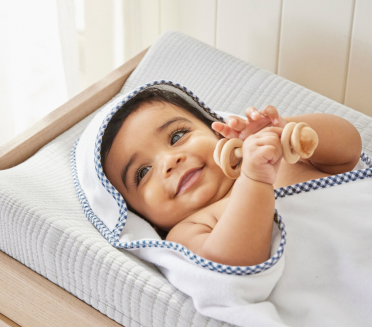Tips and Tricks: How to Clean Glass Baby Bottles
As baby glass bottles become increasingly popular with parents, many moms and dads are wondering just how to keep these eco-friendly alternatives clean. As you'll see in this guide from Pottery Barn Kids, cleaning glass baby bottles is actually quite easy. You can even wash them in the dishwasher!

Brush It Out
First things first: Arm yourself with the right equipment. Pick up a bottle brush and a nipple brush. These items are often sold together, making it easy to get what you need. Bottle and nipple brushes are specially shaped so you can remove all traces of milk from your glass bottles as soon as baby is done feeding. Don't use the same sponge or brush you use for cleaning your other plates, cups and glasses. Keeping your baby bottle cleaning tools separate from the other cleaning items in your sink arsenal can make it easier to maintain sterility and keep your baby safe from bacteria and viruses.
Don't Let Milk Dry
Dried milk is difficult to clean and can cause blockages in the nipple if it isn't removed properly, so the ideal strategy in this case is to avoid letting the milk dry in the first place. That means that as soon as you're done feeding, you should rinse the bottle and nipple in hot water. If you give it a good rinse now, you won't have to go so hard with the brushes later. When you're too pressed for time to immediately rinse your bottles, soak them in hot, soapy water and give them a good scrub before loading them into the dishwasher.
Smart Drying and Storage
Just as it's best to keep bottle cleaning tools separate from the other items in your kitchen, it's also helpful to keep your glass bottles stored in a dedicated space and let them air dry on their own drying rack. This makes it easier to keep track of your bottle parts (including rings, nipples and bottles), and it also simplifies sterilization since you'll only have to worry about one cabinet or storage compartment when cleaning. Sterilizing the bottles themselves is important, of course, but you'll maintain that sterility best if you then store the bottles in a space that gets disinfected along with the bottles themselves.
Glass baby bottles and rubber nipples shouldn't go into the sterile cabinet wet. If you hand wash your bottles or if the drying cycle on your dishwasher doesn't leave each bottle part perfectly dry, use a dedicated drying rack that's only for bottle drying use. You can also use this drying rack to let your bottle brushes air out. The brushes themselves should stay dry and get sterilized with some regularity as well. Even organic or otherwise healthy materials can grow bacteria when they stay wet for too long, so keep these cleaning supplies dry to keep sterilization successful.









